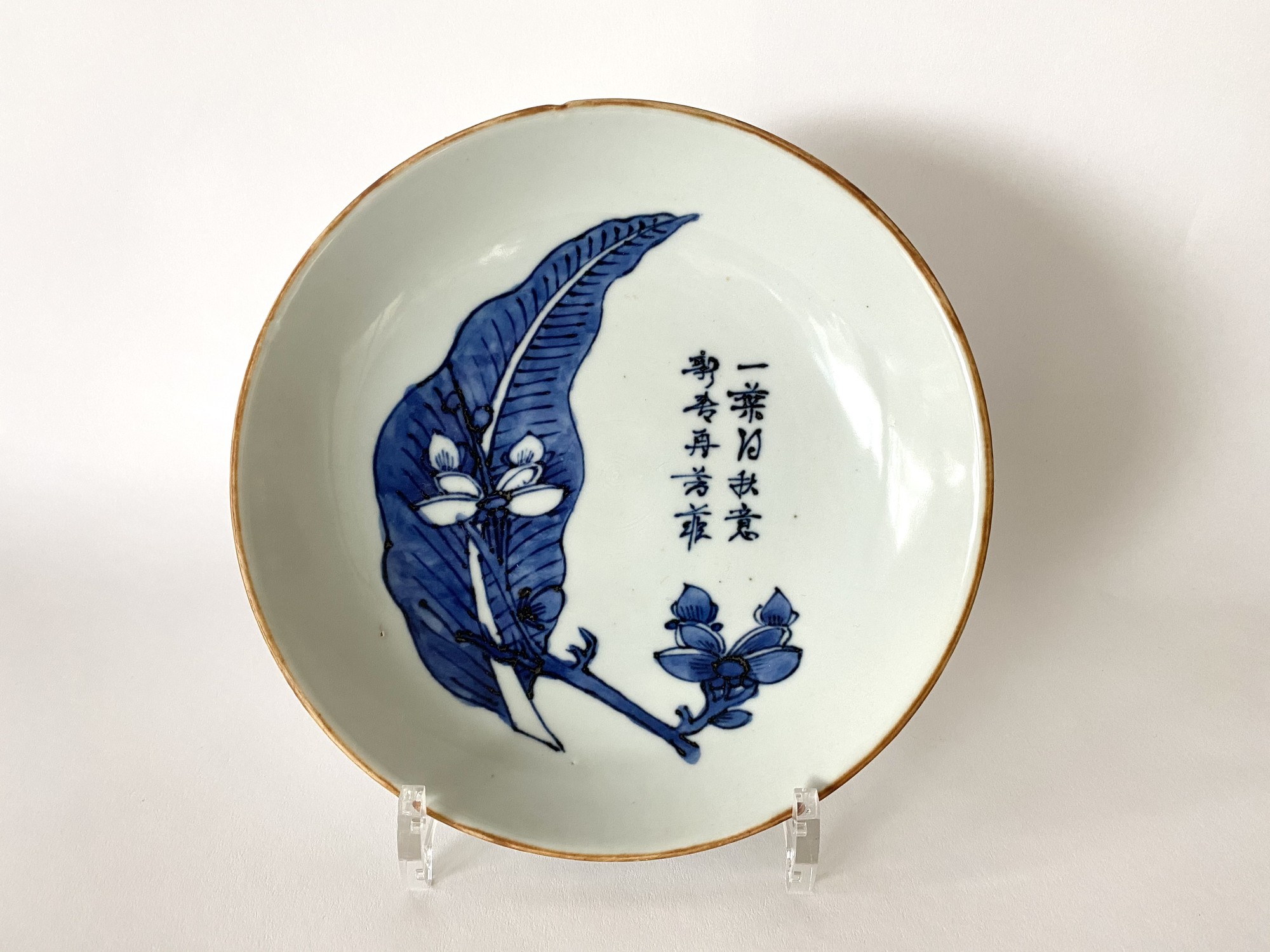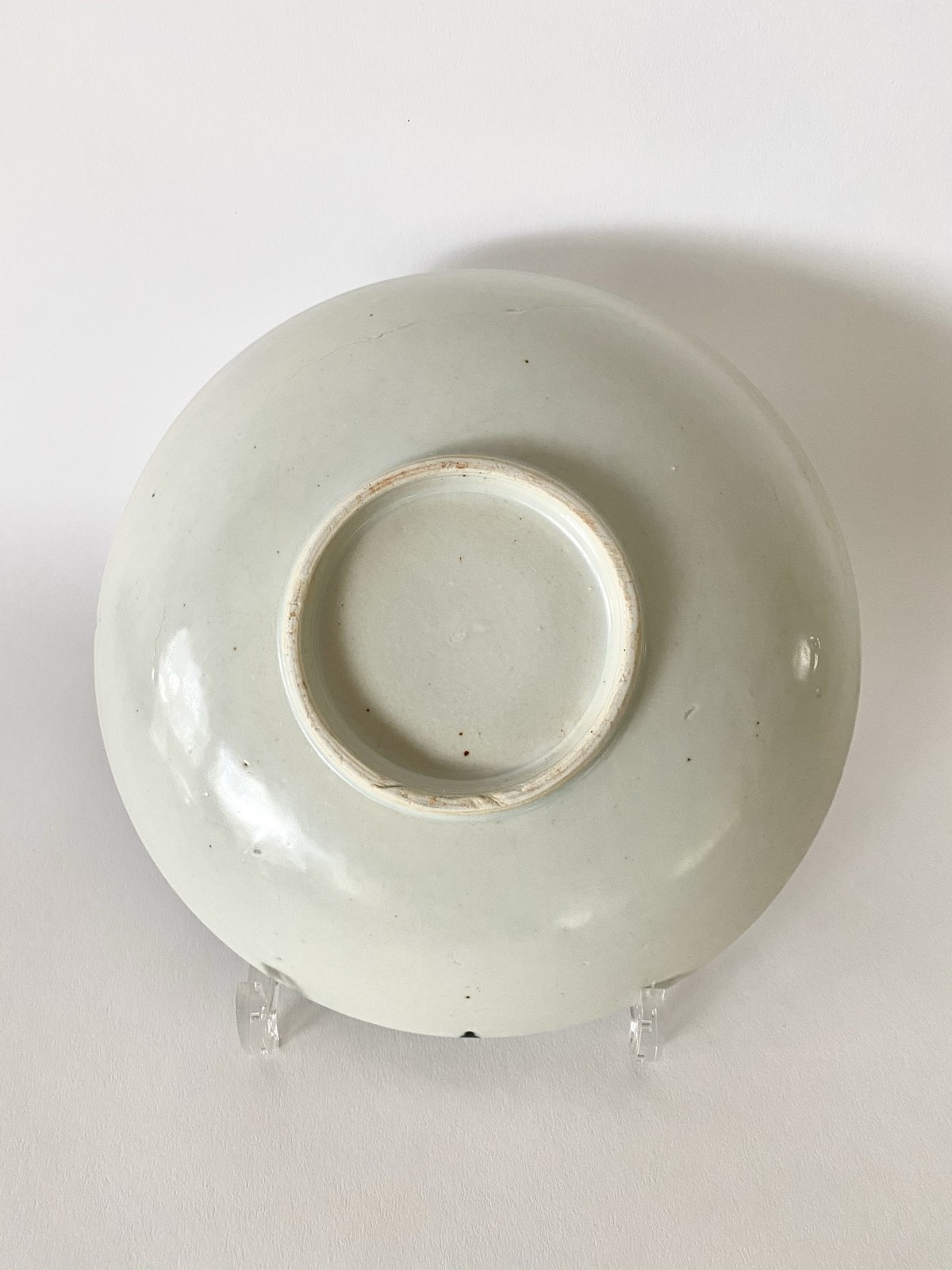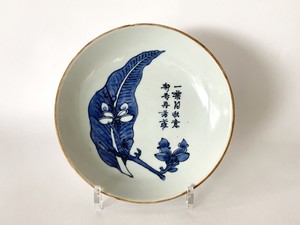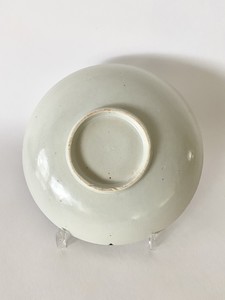Shunzhi period (1644-1661)
The dish is of saucer shape with rounded sides rising towards a brown-dressed rim. It is painted with a leaf and a branch of flowering magnolia. To the right is a two-line inscription reading:
'One first) leaf predicts the arrival of autumn, (but) the new spring will be full of fragrance and colour (of the flowers)'.
Diameter 20.3 cm
An almost identical dish is illustrated by Butler, Curtis and Little in ‘Shunzhi Porcelain, Treasures from an Unknown Reign’.
Although this dish also has the 10-character inscription, the meaning is less optimistic reading: ‘The Falling of one (first) leaf predicts the advent of autumn (which wil fall) over the whole world’, suggesting the harbinger of bad times. Interesting is the fact that the leaf on this dish looks more withered showing a hole which emphasizes the arrival of disster.
Both dishes have typical characteristics of the Shunzhi period: the saucer shape, the brown-dressed rim and the subject showing a decaded leaf and a two-line inscription. More usual,however, is the combination of a leaf and a rock instead of the flower branch and the inscription written in reserve on the leaf. See for an example our Exhibition Catalogue ‘Chinese Porcelain from the Wanli to Kangxi Period’, Amsterdam 2019, No 47
The last three reigns of the Ming dynasty and the first two decades of the Qing emperor Kangxi (1662-1683), is a period known as the Transitional period, politically and socially one of the most chaotic times in Chinese history. The first Qing reign of Shunzhi was still marked by economic decline, social disorder and miltary conquest. Many scholar-litarati and officials retired from the chaos to the countryside where they contemplated the tragic end of the Ming dynasty which is reflected in the subject of the present dish.
Similar subjects on porcelain made during this period of upheaval and great uncertainty can be interpreted as a hidden message conveying a political commentary.




